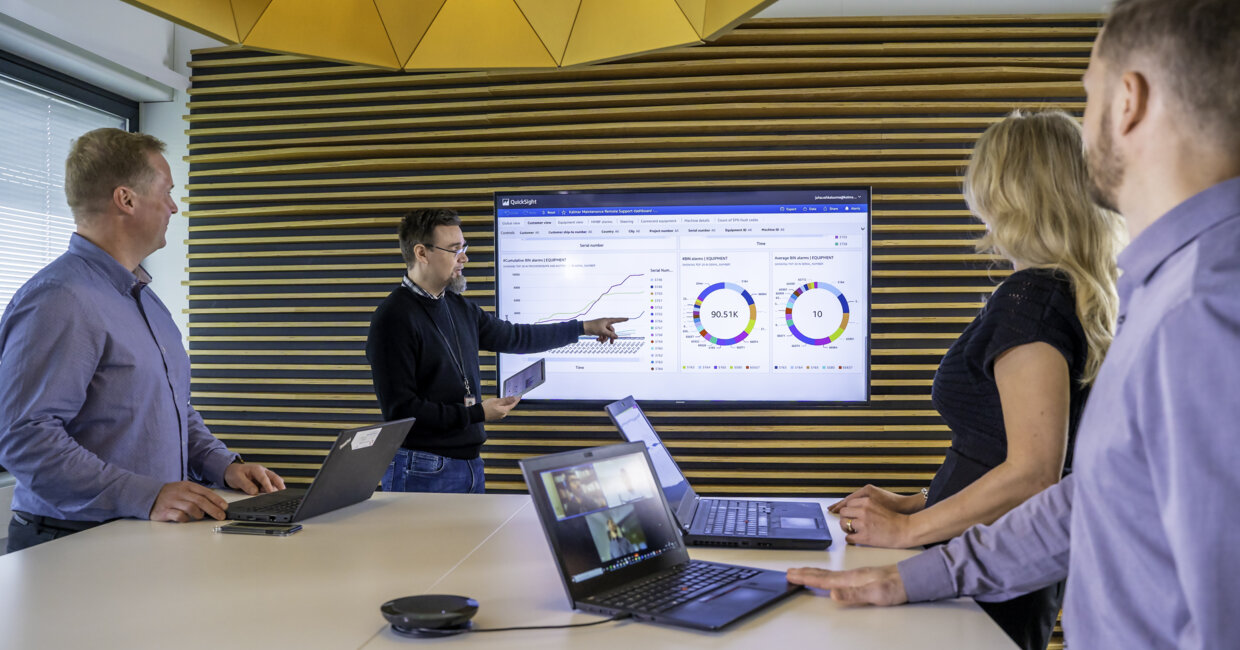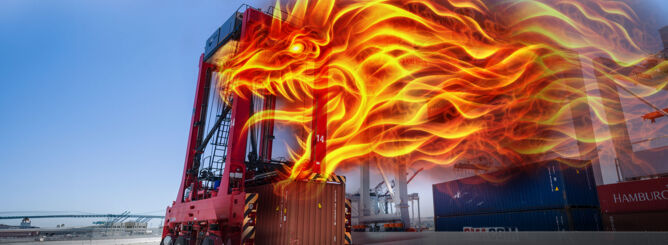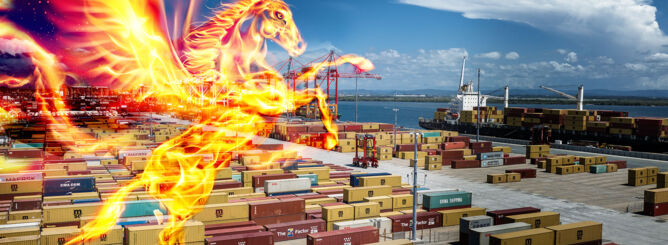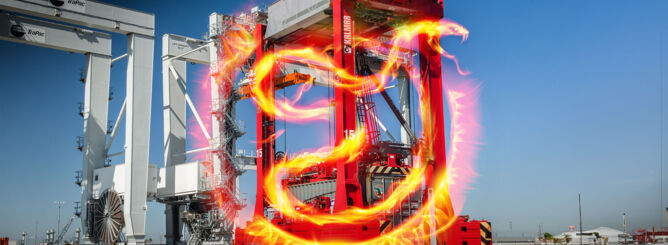Remote services give terminals 24/7 access to advanced analytics and top expertise
New remote service concepts are giving terminal operators the possibility of drawing upon system providers' experience and expertise wherever they are in the world. Through remote connectivity and automatic continuous monitoring, experts can help identify, anticipate and fix issues with automation systems or equipment, thus minimising downtime while maximising availability and performance.
As cargo handling solutions become increasingly sophisticated, getting the maximum benefit from equipment and automation system investments often requires specialist knowledge and skills that may not be available on site. Recently, system providers including Kalmar have been launching new remote services that help terminals optimise equipment availability, minimise disruptions, enable continuous improvement and extend the equipment lifecycle.
Kalmar has offered connected machines for several years, but over the last year, this capability has been extended to a service for the maintenance departments of terminals. Data from the customer's connected machines is analysed and turned into concrete action points for improving performance.
"The technical capability for remote services has actually been there for quite a while, but it's only recently that we have seen this come together as a compelling service model from the point of view of terminal operators," says Teemu Tapio, Manager, Contract Management, Kalmar. "On one hand, we are now seeing sufficiently large fleets of connected equipment that can deliver the large datasets needed for advanced analytics. Simultaneously, these same analytics solutions have been supercharged by recent advances in AI and machine learning."
From in-house R&D to customer value
Originally, the principal reason for connecting mobile container handling equipment to cloud-based analytics was to evaluate new solutions and support equipment manufacturers' product development. At Kalmar, the first machines to be connected have been the ubiquitous straddle carriers, with RTG cranes currently next in line. However, these in-house remote capabilities have rapidly evolved into full-fledged services for terminal operators.
"You could say that we first connected our machines to support our own R&D processes and then started figuring out what else we could do with the data," says Hannu Karp, Director, Automation Services, Kalmar. "It wasn't long before we discovered that the same tools could be used not only to develop our own products but also to improve our customers' processes."
In a similar fashion, remote service capabilities that have originally been developed for automation and software systems have recently been finding new applications in mobile container handling equipment.
"There are always these two sides to the equation", Hannu notes. "You need to optimise the performance and maintenance of the physical machines, while also making sure that the automation system is running with all the right configurations and parameters. A lot of this work happens behind the scenes but it can have a measurable impact on the overall performance of the terminal."
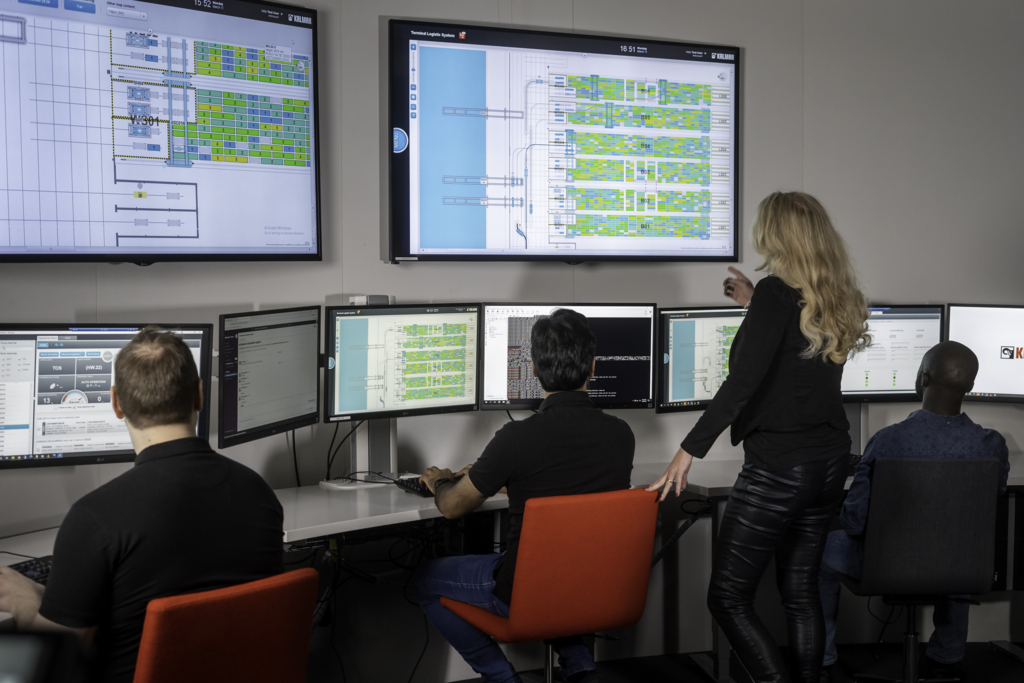
Expertise around the clock
Remote services are a way of utilising the data from connected equipment fleets irrespective of where the customer is located. This means that operators have access to the same professional expertise as when the experts from the system provider are on-site at the terminal. Furthermore, remote access to relevant data from connected machines enables off-site analysis in much greater depth, by using advanced algorithms and analytic solutions. This can be a powerful tool for helping terminals develop their fleets and operations based on their business needs.
The COVID-19 pandemic has played a part in speeding up the growth of remote services, but the main drivers have been there for a long time. "Terminal operators are always looking to improve their performance, so remote services are an easily accessible way to create more value from their equipment and systems," notes Hannu.
Teemu points out that despite the rapid growth of high-speed data connections and cloud-based analytics, remote services still depend on a close collaboration between terminal operators and equipment providers. "We know our products inside out, so we know exactly how the machines should perform optimally. On the other hand, the customer sees the machines at the site and carries out much of the regular maintenance on them. So if we are able to combine both of these perspectives and get together on a regular basis to discuss things, we can really improve both the reliability and performance of the fleet."
Hannu notes that the same holds for the entire automation system. "It's all about bringing together the best competence on both sides. The terminal always owns their own data, but we can now bring to the table a lot of insights from our most experienced product experts, even if they are located thousands of miles from the customer's site."
Pre-emptive troubleshooting
One of the significant aspects of new remote services is that they enable automated 24/7 monitoring of system log data that previously would have required proactive flagging by human operators. Whether the issues are related to server performance, systems integration or cybersecurity, remote monitoring and advanced analysis algorithms can identify problems before they occur and, when needed, pass them on to service staff for more in-depth analysis and responses.
"With remote maintenance support, we can help customers reduce downtime by continuously improving the performance of their fleet based on equipment data,” says Teemu. “The data gathered from their machines is stored in our secure cloud. From there, our experts analyse and enrich it in order to produce a report with clear findings and recommendations to optimise equipment maintenance and usage."
As an example, for a terminal with 32 connected straddle carriers running 80,000 container cycles, Kalmar's team would typically measure over 500 different variables, collecting a huge amount of data in the process. This data-driven approach has enabled early diagnosis and resolution of issues such as brake dragging, which can be identified through abnormalities in the brake cooling system and by overall energy consumption.
With remote maintenance support, we can help customers reduce downtime by continuously improving the performance of their fleet based on equipment data.
"Resolving this issue saved the customer in question 3,000 litres of fuel per annum and helped avoid related component failure that would have led to unplanned downtime," notes Tapio. "In another example, Kalmar resolved an issue with the hydraulic pump on a machine that was identified by analysing data on hydraulic oil temperatures and machine energy consumption. Replacing the pump reduced fuel consumption by 6% and avoided related component failures that could have taken the machine out of action unexpectedly.
In the third example, Kalmar’s experts helped the terminal fix a malfunction of the external integrated system before it hampered the automated operation. Based on a proactive alert, Kalmar identified a source system sending massive amounts of unnecessary messages to the automation system. By helping the customer fix an issue that could have exhausted the automation message processing, the customer avoided significant downtime for their automated operations.
Remote services being developed by Kalmar and other system providers span several service levels, from periodic system health checks to continuous proactive monitoring of key systems and full predictive analytics solutions. Regardless of the level of service they choose, remote monitoring and analysis can help terminal operators benefit from continuous improvement in fleet performance and reliability, as well as find significant cost savings.
“Whether we are dealing with container handling equipment or the entire automation system, remote services can give the terminal a head start by identifying the root causes of problems and resolving issues as they are developing," says Teemu. "With the predictive monitoring services that we have available and are developing further, we can intervene at the earliest possible stage to prevent problems from occurring in the first place."
